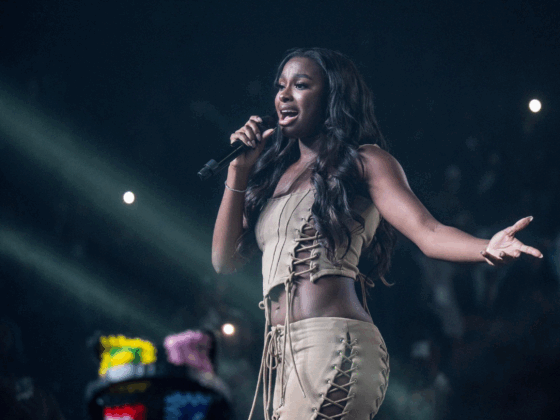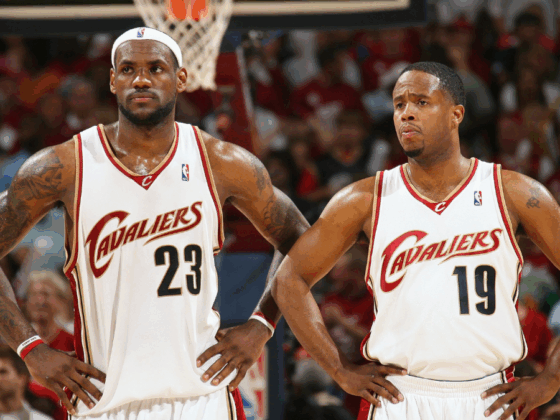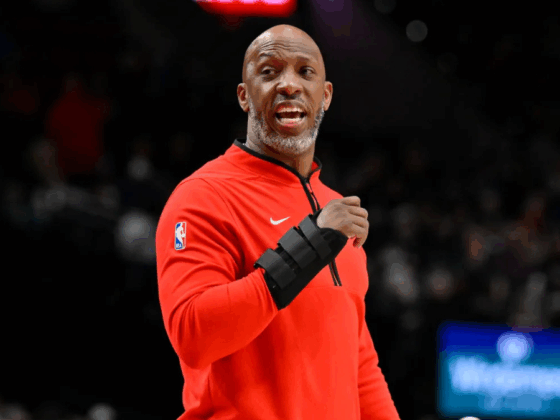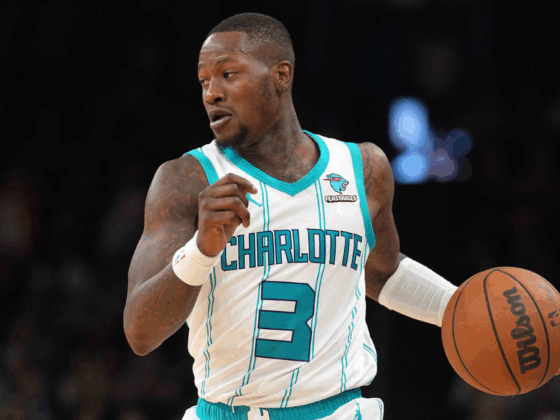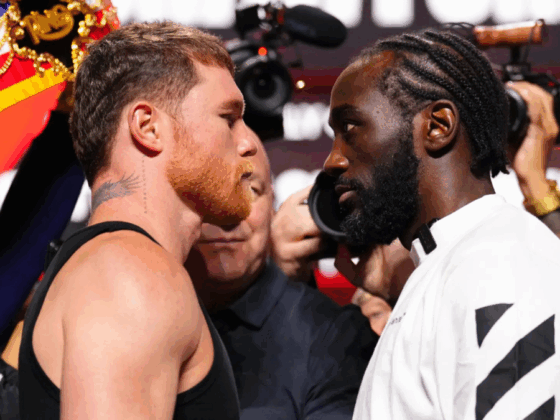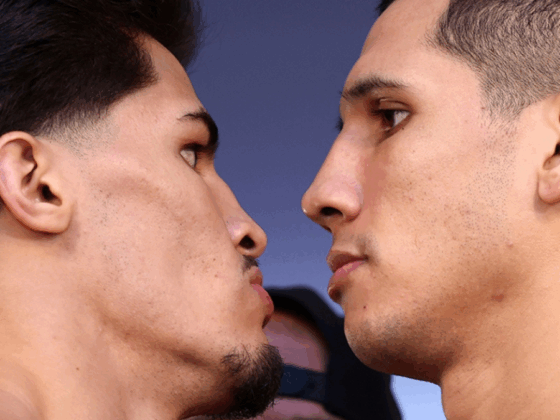
The Dallas Mavericks’ roster, like numerous other rosters, needs bodies. Between COVID-19 wreaking havoc league-wide and Luka Doncic’s flat 3-point shooting, the void left by Kristaps Porzingis falls in line with the abnormal start to the season.
Reflecting on the NBA bubble postseason run, the what-if game strongly applied to the Dallas Mavericks. Once Porzingis was deemed out of the playoffs due to a torn meniscus, the reality of Dallas defeating the Los Angeles Clippers before their’ meltdown to the Denver Nuggets remained a fantasy.
During the three playoff games he played, Porzingis endured the pain of a torn meniscus yet heroically put up 23 points per contest with an eye-popping 52.9 3-point percentage. To the dismay of Mavs fans, Porzingis’ injury was the nail that popped the Mavericks’ balloon of hope.
In light of the 2019-20 NBA season’s odd ending point, the Mavericks’ frontcourt star assumed his recovery timeline would coincide with the league’s return in February or March. However, as life often goes, the opposite occurred, leaving the timeline of Porzingis’ triumphant return up in the air.
Despite Doncic’s MVP-like run in the young, risky 2021 season, Porzingis remains the defense’s savior. However, merely skimming the numbers suggests Dallas hasn’t endured much torment without Porzingis.
Defensive Void Without Kristaps Porzingis
In a petite sample size, the Mavericks somehow managed a 106.3 defensive rating, making for third-best in the NBA. Yet, Dallas’ interior defense desperately calls for both size and skill.
Unfortunately, historically underperforming rebounders Maxi Kleber and Dwight Powell make up most of the frontcourt minutes. Nine games in, Dallas ranked 24th in both rebounds and blocks.
Regardless of the skepticism pointed at the defensive importance of rebounds, the fundamental aspect of accumulating rebounds remains: Keeping the ball away from your opponent is good.
When it was announced Kristaps Porzingis would miss games due to a delay of surgery, a rocky start made sense. Unfortunately for Dallas, the first three games came against the Phoenix Suns, Los Angeles Lakers, and the Los Angeles Clippers — currently three of the top-four teams in the Western Conference
The Mavericks lost the first two games but ended the three-game run with a record-breaking, soul-taking, 124-73 blowout victory over the Clippers. But in the first two games, the gaping black hole of a Porzingis-less lineup reared its ugly head when facing dynamic bigs in Anthony Davis and, to a lesser extent, Deandre Ayton.
Using 2019-20 advanced stats, Porzingis led the Mavericks’ defense by a country mile. The basketball ambassador of Latvia posted a 5.4 block percentage (the seventh-best mark in the NBA) and a total rebound percentage of 15.6 percent (ranking 26th in the NBA).
The Powell-at-center lineup was doomed from the start.
In 65:49 of playing time, the Powell-at-the-five lineup has posted a minus-12.6 rebound percentage and again is a net negative in rejections with a minus-1.9 block percentage. Powell is an energy-providing piece, not a featured player. It’s unfair to expect him to exert anything other than flashes of alley-oop dunks and the occasional drive to the basket.
By all means, Powell’s recovery from an Achilles injury suffered in January merits applause. However, Powell, as a starter at this stage in his career, doesn’t coincide with Dallas’ aspirations as a playoff contender.
Kleber’s defense warrants praise, but he isn’t an anchor on that end of the basketball. Without Kristaps Porzingis, Kleber’s defense plays out as an admirable performance in a losing battle. The Wurzburg, Germany, native performs better with the stretchiest of floor stretchers in Porzingis.
Again, using the Basketball-Reference lineups tracker, the Porzingis-Kleber combination produced positive results. Defense isn’t an afterthought when those two share the court. The Latvian-German duo posts net-positive stats in rebounding and blocks, the heavily mentioned holes in the Mavericks’ game.
In Need of Space
For all that’s said of Kristaps Porzingis on the defensive end, his dimension-adding offensive game enhances the possibilities of Luka Doncic. Without Porzingis, the 3-point producing offense of the 2019-20 season feels as distant as the 2021 presidential inauguration.
Last season, Dallas became the NBA’s all-time leader in offensive efficiency by scoring 115.8 points per 100 possessions. Second in both attempts and makes, Dallas converted 36.7% of its 3-point field goals. Astonishingly, that percentage was only good enough for 10th in the league.
This season’s offense has been night and day compared to that one, In the early run of the season, Dallas is in the bottom-10 of the league in 3-point shooting.
Despite attempting 38.6 attempts from deep, good for seventh in the league, Dallas struggles from the perimeter with a 35.1% mark. The failed 3-pointers aren’t a result of bad shots, per se, but more so players bricking open looks.
Draft-day-acquired combo guard Josh Richardson isn’t as bad as his early-season defensive numbers suggest, especially considering he’s asked to guard the NBA’s best players every night. However, the guard’s shooting numbers remain a thorn in Dallas’ offense.
Thankfully for Dallas, Tim Hardaway Jr. got his groove back, shooting 42.4% from deep. The pieces are there for Dallas to become one of the league’s best offenses. Instead, Dallas is a middle-of-the-road offense by definition, as shown by its 18th-ranked offensive rating.
Porzingis’ return to the lineup is the equivalent of the Democratic party taking over the House and Senate; it dismisses excuses of losses and magnifies support for Doncic and the rest of the Dallas franchise to succeed.
Tempering Expectations
Upon Porzingis’ first game back from his Achilles injury, the Mavericks were on a three-game win streak. Following a game that was supposed to be played against the New Orleans Pelicans but was postponed due to COVID-19, Porzingis returned to face a physically deficient frontcourt in the Charlotte Hornets.
Before the game, Rick Carlisle stated Porzingis wouldn’t have an exact minute restriction, rather a “minute range,” implying it would be dependent on the game scenario.
The postponed game, in a way, was a blessing in disguise. It would have been hell for Porzingis to matchup with Vikingcosplayer Steven Adams and gravity-defying Zion Williamson. Instead, the 7-foot-2 center eased his way into a 4-of-9 3-point performance against the Hornets.
In only 21 minutes, he managed to post four rebounds in addition to two blocks. Despite the limited minutes and reasonably rusty start, Porzingis finished with a plus-1 plus-minus.
As the games accumulate and the playing time increase, the mental battle of recovering from a serious injury fades. When dealing with a player attached to numerous serious injuries, such as Porzingis, it’s important to work them back into the rotation steadily.
Porzingis took one layup attempt versus the Hornets, and it barely hit the rim. The opportunity for a dunk was there, but Porzingis’ physical and mental battle was visible during that sequence. However, just as good players do, Porzingis found worth in other areas. The stretch-five role worked smoothly for Porzingis to find some rhythm.
With the Milwaukee Bucks next on the table, another potentially successful night from deep sat in the balance. Similar to last season, the Bucks’ defense encourages 3-point shooting. However, the Bucks’ defense had other plans for Porzingis.
On the majority of the opportunities Porzingis saw, a Buck defender accompanied him. The Bucks’ defense didn’t permit the space the Hornets did. Even on the one open 3-point shot, 2020 Defensive Player of the Year Giannis Antetkounmpo provided a closeout.
In positive news, Porzingis’ faceup game provided the Mavericks with six points in the fourth quarter. Confidence will come from taking advantage of mismatches. The Mavericks’ star shined in a few sequences at the elbow — four of his six fourth-quarter points came in post-up situations.
Analyzing the Last Shot from Kristaps Porzingis Against the Bucks
Much to Mavs fans’ chagrin, Doncic didn’t touch the ball on the possession where Porzingis shot a 3 from about 28 feet. A lot can be said about that shot. However, the main takeaway is the lack of rhythm for Porzingis to take such a shot at this point in his recovery.
Again, the minute-range limit came into effect as the Mavericks had a chance to win the game, and reasonably so, Carlisle allowed Porzingis back into a clutch situation. Unfortunately, Porzingis hadn’t touched the ball in about six minutes of game time.
Although the shot attempt was deep, and lock-down defender Antetokounmpo was in arms’ reach, Porzingis is no stranger to making such 3s. Ultimately, the look was fine, but without the reps, the shot cleaned the backboard’s glass left side.
Room for Improvement
Unlike the close call with the Bucks, the Chicago Bulls easily handled the Mavericks, despite Luka Doncic’s 36-16-15 stat line. Again, Porzingis showed improvements in his knee by dunking three times.
However, his 3-point shooting took a significant dip. Porzingis failed to make a 3-point field goal on nine attempts. In contrast to his dunks, Porzingis’ jump shot lacked lift. The ball hit the front of the rim on numerous occasions and looked as flat as Kyrie Irving’s vision of planet earth.
With the 4-8 Toronto Raptors hosting the de facto home game in Tampa Bay on Martin Luther King Jr. Day, the Mavericks have a legitimate chance at a bounce-back performance. On the second night of a back-to-back schedule, it’s possible Porzingis plays fewer minutes or even sits out for the evening.
However, regarding the importance of rhythm, one could argue Carlisle allows his star center to stretch his wings for a much-needed win against an Eastern Conference bottom dweller.
